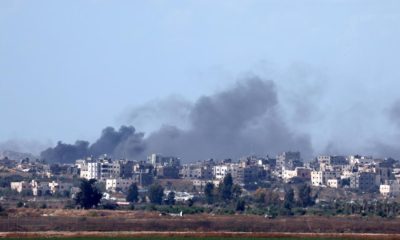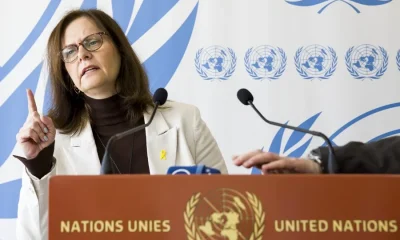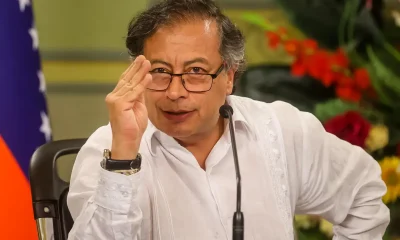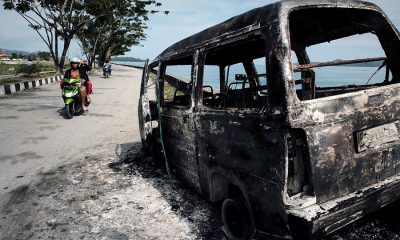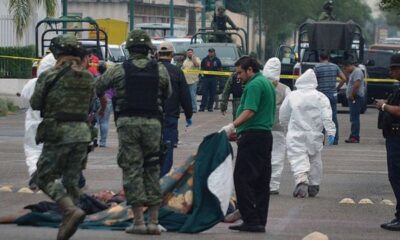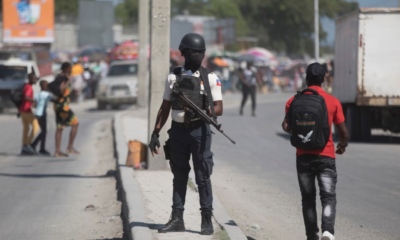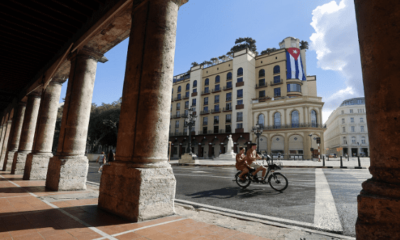International
The UN estimates the number of deaths in the Papua New Guinea avalanche at 670

A United Nations agency estimated this Sunday that more than 670 people were killed in the avalanche of land that in the early hours of Friday buried a remote village north of Papua New Guinea.
The head of the International Organization for Migration (IOM) in Papua New Guinea, Serhan Aktoprak, told Australian state television, ABC, that according to the new estimates, more than 150 houses were buried by a layer of rocks and earth between six and eight meters deep and they fear that more than 670 people have lost their lives.
However, the United Nations delegation in Papua New Guinea clarified this Sunday to EFE by email that the number of deaths confirmed so far by the emergency response team is five, those whose bodies have been recovered in the village of Kaokalam, 600 kilometers from the country’s capital, Port Moresby.
“The team has informed us that it is difficult to confirm the actual number (of deaths) while search and rescue efforts continue,” said Kesang Phuntsho, head of the United Nations office in Papua New Guinea.
In addition to the five corpses recovered, the UN delegation indicated in a report this Sunday that there are an undetermined number of injured, “including 20 women and children.”
The official UN statement is also more cautious about the number of houses buried by the analch, which at the moment is between 50 and 60, in addition to a school, a church, orchards and vehicles.
The United Nations report indicates that the disaster area remains dangerous due to the risk of new avalanches, so they are working on the evacuation of the survivors, about 1,250, according to Aktoprak.
“My colleagues had to escape from the place because of the growing danger, since rocks continue to fall non-stop and the earth continues to slide,” said the head of IOM in the country.
He has also warned that the large amount of land fallen during the avalanche is putting pressure on the houses in the area, so evacuation is necessary.
About 4,000 people officially live in the area where the avalh occurred, although the authorities estimate that the number of people affected is higher, since the town in which it occurred is a place where locals fleeing conflicts and tribal clashes in nearby villages take refuge.
Much of the village of Kaokalam was buried by a layer of between six and eight meters of rocks and stones and the avalanche affected an area of more than 200 square kilometers, including about 150 kilometers of the main road of the province, which makes it difficult to rescue and help the survivors.
In addition, other sections of access to the village are cut off by previous landslides, so it is only possible to access by helicopter or in off-road vehicles.
Images from the site of the catastrophe shared on social networks show a vast area of rocks and land torn from a hill, as well as neighbors collecting their behods and exploring the area buried by the landslide in search of survivors.
The affected area usually suffers from heavy rains and floods, and the landslides are not unusual in the country, in which, despite the wealth in natural resources, a large part of its more than nine million inhabitants live in extreme poverty and is isolated due to a deficit in communications and infrastructure, especially in remote places such as the current catastrophe.
International
At Least Eight Dead and 19 Injured in Deadly Bus Crash in Veracruz, Mexico
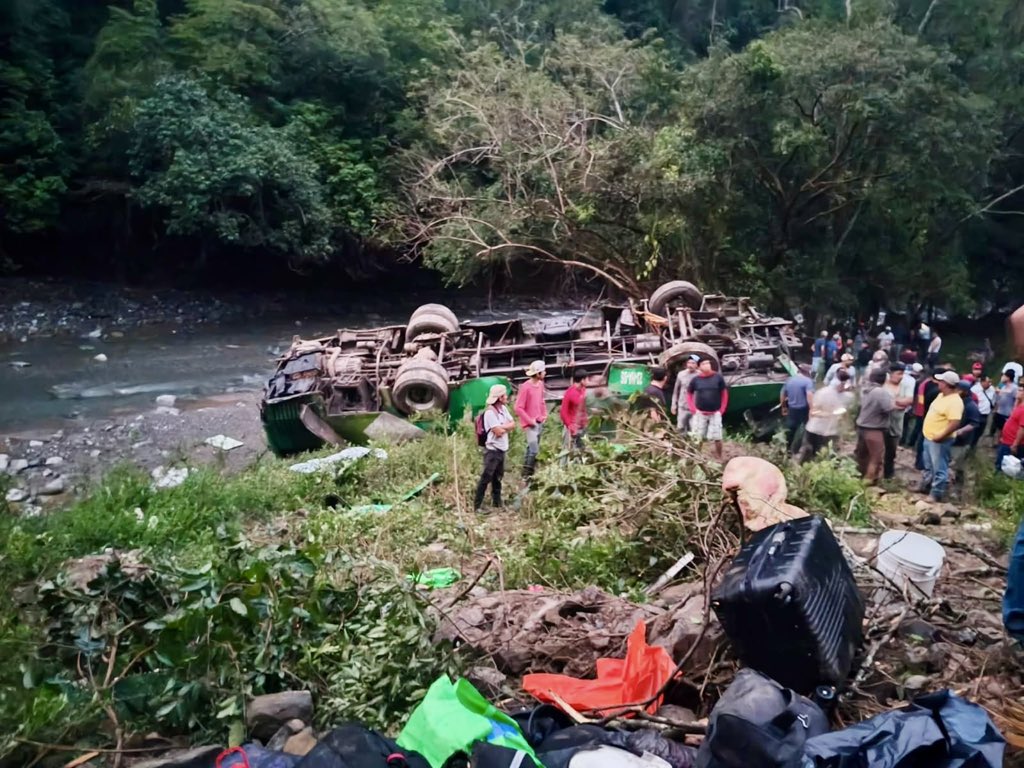
A tragic bus accident in the eastern state of Veracruz left at least eight people dead and 19 others injured on Wednesday afternoon, according to local authorities.
The vehicle was traveling through the town of Zontecomatlán when it crashed near a ravine, state Civil Protection officials reported late Wednesday night. “Regrettably, the prosecutor’s office has confirmed eight fatalities,” the agency stated in an official release.
Emergency Response and Medical Care Rescue teams worked into the night to assist the survivors. The 19 injured passengers were stabilized at the scene before being transported to hospitals in the nearby municipalities of Chicontepec and Huayacocotla. While the identities of the victims have not yet been released, Mexican press reports indicate the bus was en route from Mexico City to Chicontepec.
A Recurring Issue on Mexican Highways Road accidents involving long-haul passenger buses and freight transport are a frequent occurrence in Mexico. Experts often cite excessive speed, mechanical failure, or driver fatigue as the primary catalysts for these tragedies.
This latest incident follows another major disaster in late November, where 10 people were killed and 20 injured in a similar bus crash in the western state of Michoacán. The recurring nature of these accidents continues to spark national debate regarding the enforcement of stricter safety regulations for commercial transport units.
International
Jair Bolsonaro Hospitalized for Inguinal Hernia Surgery While Serving Sentence for Attempted Coup

Former Brazilian President Jair Bolsonaro, currently serving a 27-year prison sentence for an attempted coup, underwent surgery this Thursday for an inguinal hernia. The procedure took place at the DF Star Hospital in Brasilia, according to his wife, Michelle Bolsonaro.
The 70-year-old former leader left prison on Wednesday for the first time since his incarceration in late November to prepare for the operation. “My love has just gone to the surgical center,” Michelle Bolsonaro posted on Instagram, where she has been documenting her accompaniment during his hospitalization.
Surgical Expectations and Health History Medical professionals treating the far-right ex-president (2019-2022) anticipate the operation will last approximately four hours. His recovery period in the hospital is expected to extend between five and seven days.
Dr. Claudio Birolini explained on Wednesday that while the surgery is standardized, it remains complex due to the patient’s history. Bolsonaro continues to suffer from the long-term effects of a 2018 campaign rally stabbing, an injury that required several major abdominal surgeries in the years following the attack.
“There is no such thing as a simple surgery. However, this is a scheduled and standardized procedure, so we expect it to be carried out without major complications,” Dr. Birolini stated.
Potential Additional Procedures Following the hernia repair, the medical team will evaluate whether Bolsonaro can undergo a second procedure: an anesthetic block of the phrenic nerve. This nerve controls the diaphragm, and the intervention would aim to resolve a chronic case of recurrent hiccups that has plagued the former president for years.
Bolsonaro remains under heavy security at the medical facility as he serves his lengthy sentence related to the events surrounding the January 2023 institutional crisis in Brazil.
International
Trump Orders Construction of New ‘Golden Fleet’ to Revitalize U.S. Naval Superiority

President Donald Trump issued an executive order this Monday for the immediate construction of two new warships that will bear his name. These vessels will be the pioneers of what he described as the “Golden Fleet,” a future generation of “Trump-class” battleships that he claimed would be “100 times more powerful” than those currently in service.
The announcement took place at his private residence in Mar-a-Lago, Florida. The President indicated that following the initial two ships, the administration aims to commission up to 25 additional vessels. He is scheduled to meet with Florida-based contractors next week to expedite production, criticizing existing defense firms for failing to deliver results efficiently.
This naval expansion is a cornerstone of Trump’s goal to revitalized the American shipbuilding industry and address the strategic gap between the U.S. and competitors like China.
The move comes amid heightened geopolitical tension. Just last week, Trump ordered the seizure of all sanctioned tankers involved with Venezuela’s “ghost fleet” to cripple the country’s crude oil industry. Since December 10, the U.S. military—deployed in the Caribbean under the guise of counter-narcotics operations—has already detained two tankers linked to Venezuelan oil transport.
-
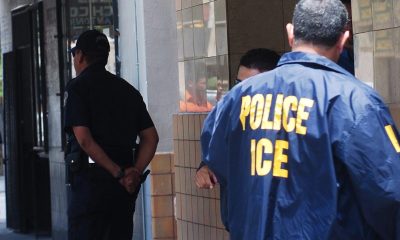
 International3 days ago
International3 days agoU.S. Judge Blocks ICE from Re-detaining Salvadoran Erroneously Deported Under Trump Administration
-

 International4 days ago
International4 days agoCristina Kirchner recovering after appendicitis surgery in Buenos Aires
-

 International4 days ago
International4 days agoFire at substation triggers major blackout in San Francisco
-

 International3 days ago
International3 days agoTrump Orders Construction of New ‘Golden Fleet’ to Revitalize U.S. Naval Superiority
-
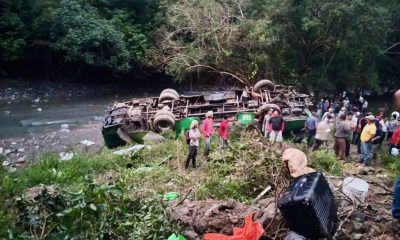
 International1 hour ago
International1 hour agoAt Least Eight Dead and 19 Injured in Deadly Bus Crash in Veracruz, Mexico
-
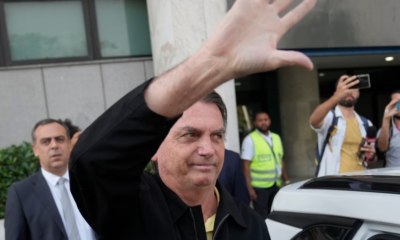
 International1 hour ago
International1 hour agoJair Bolsonaro Hospitalized for Inguinal Hernia Surgery While Serving Sentence for Attempted Coup





























